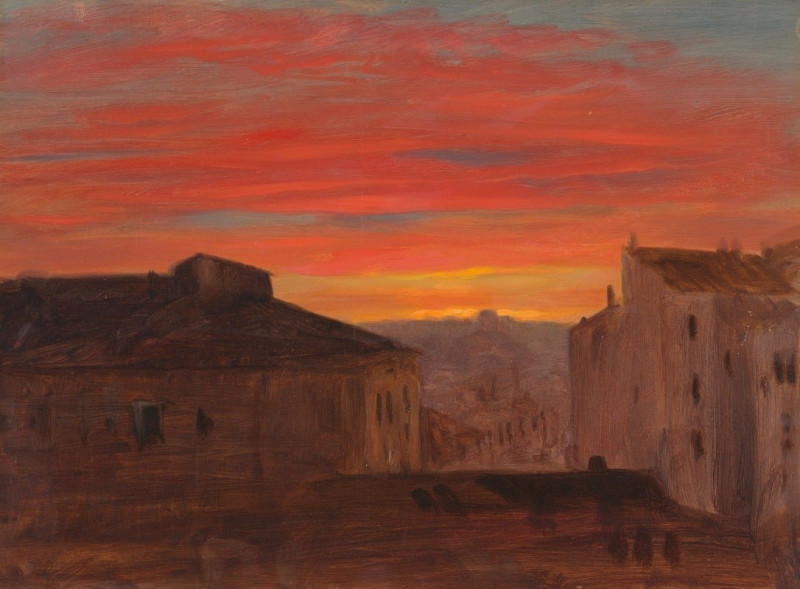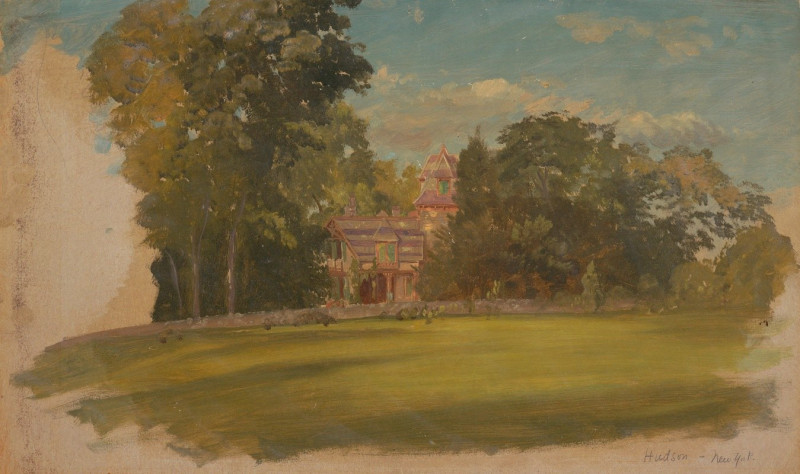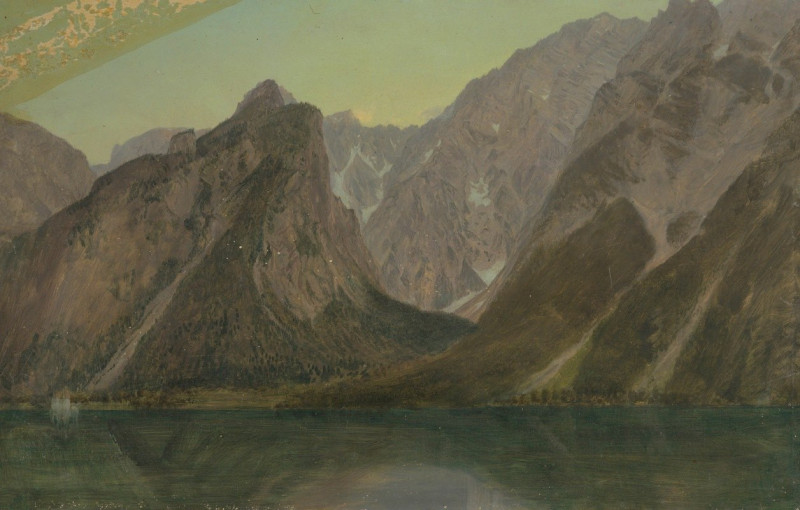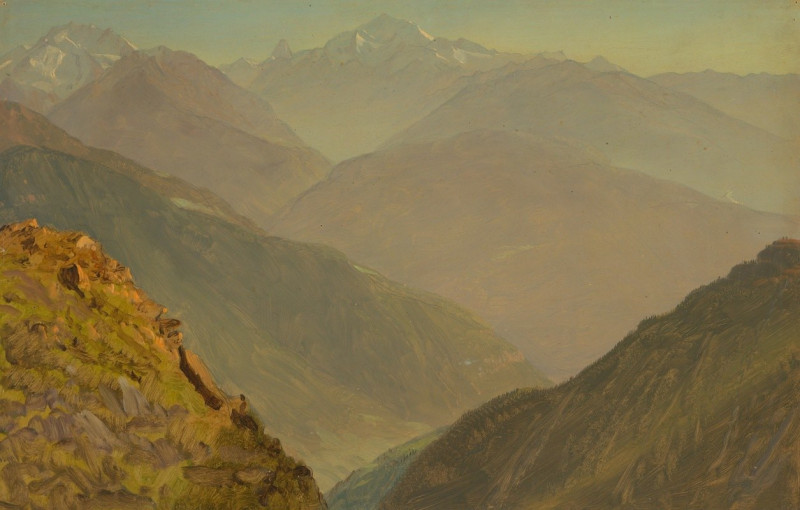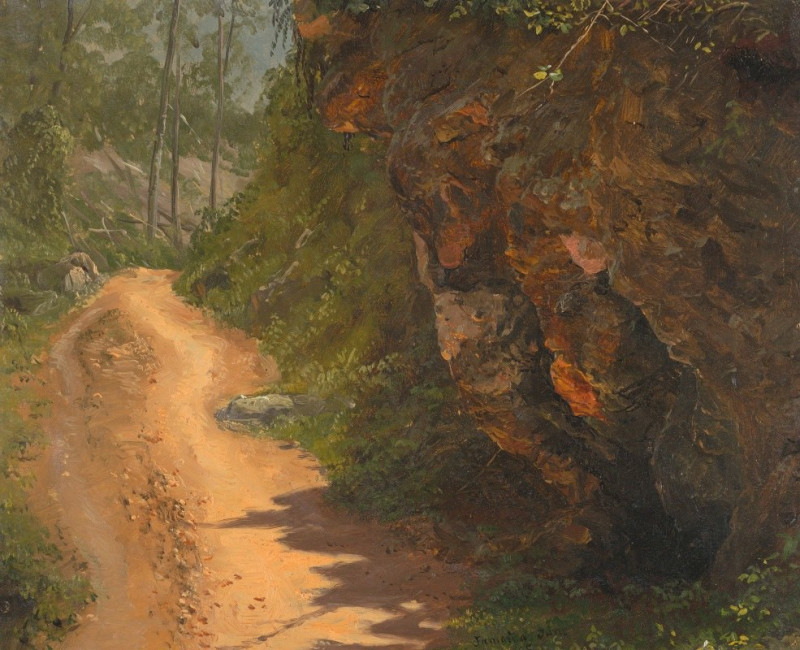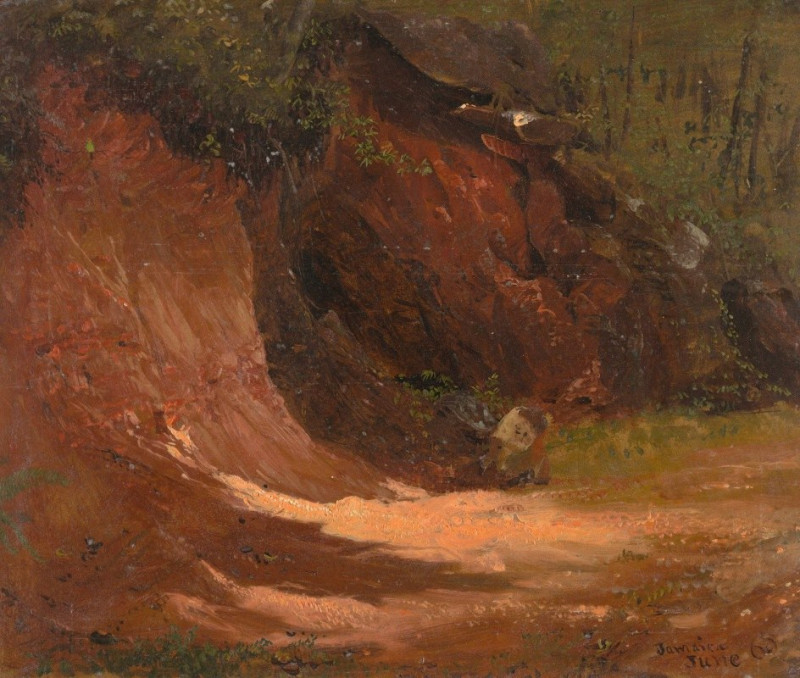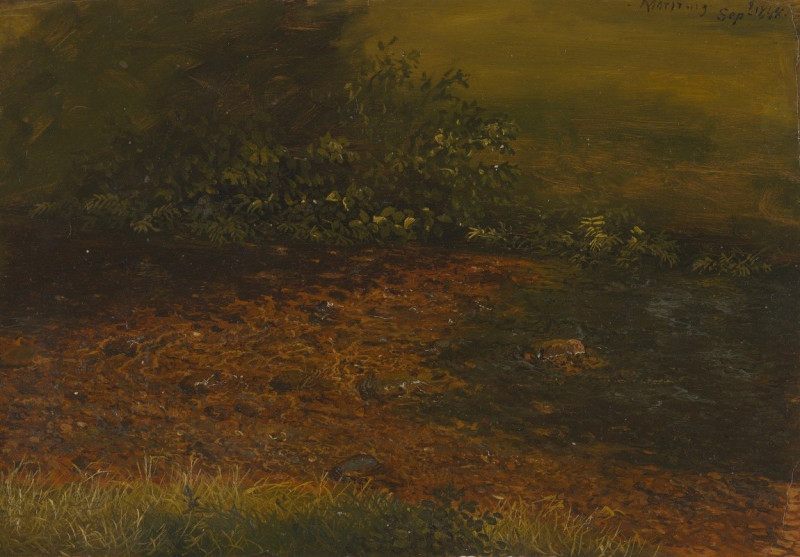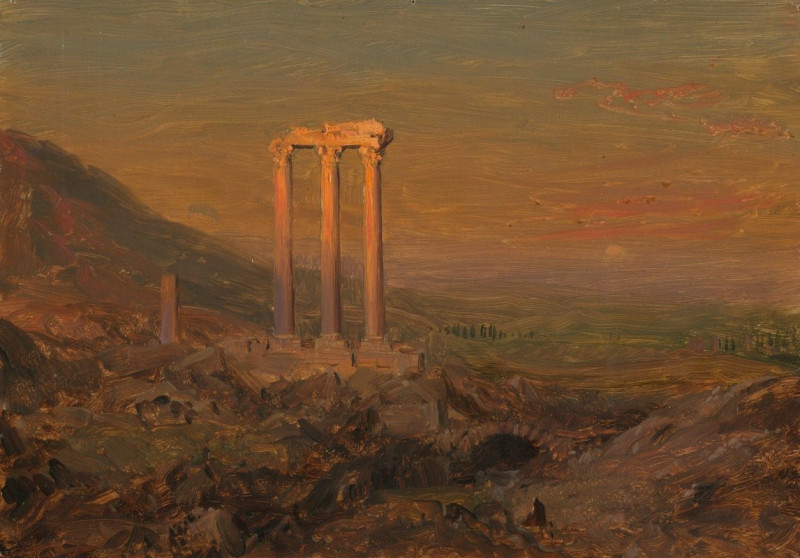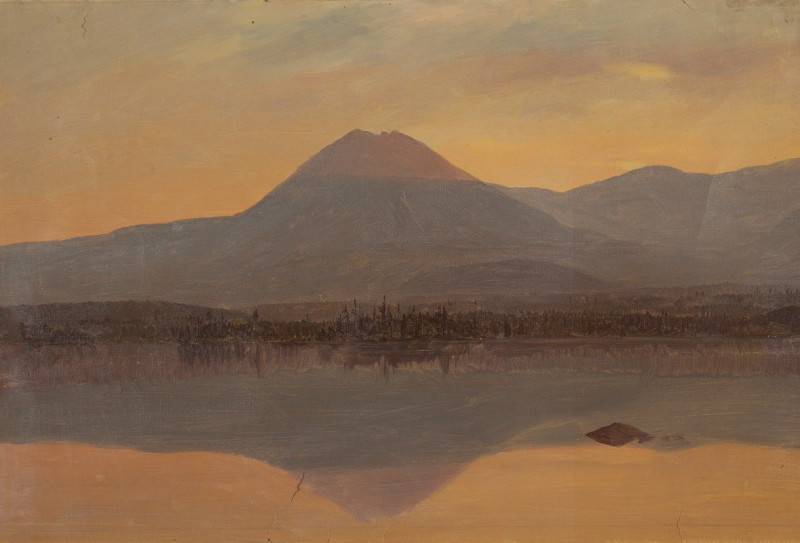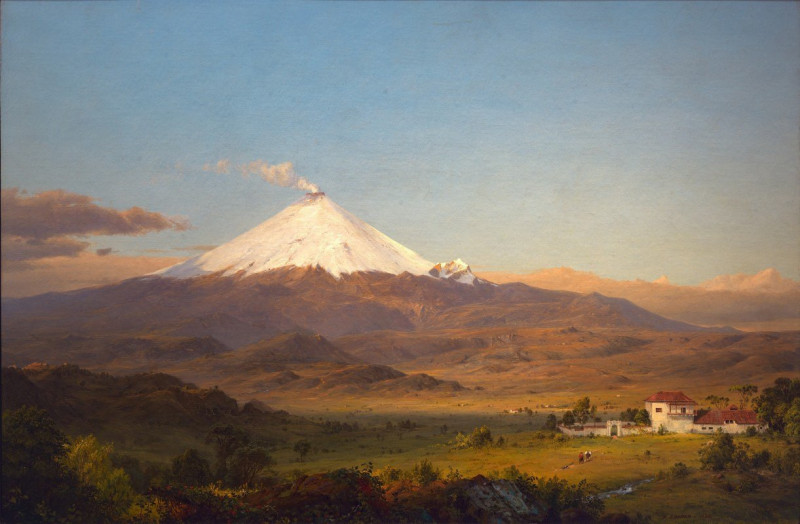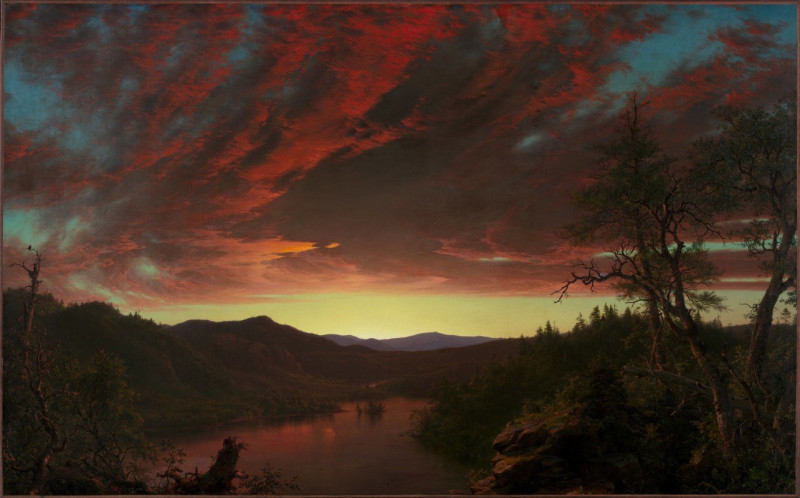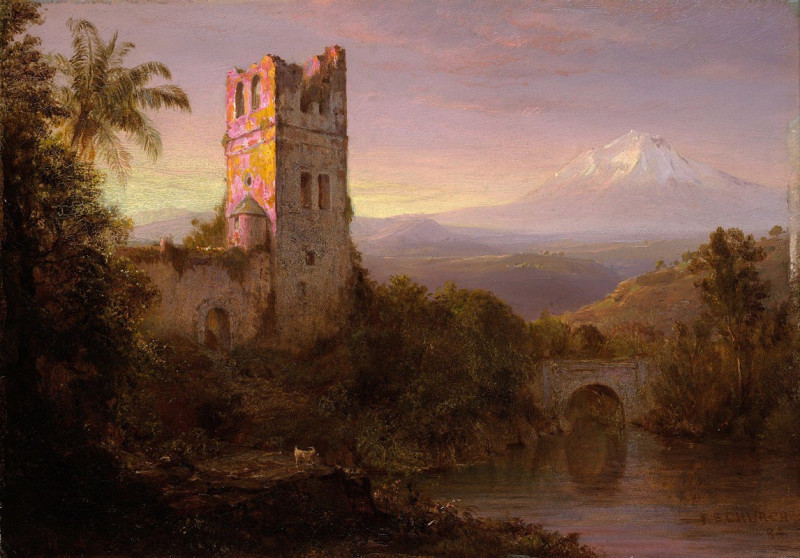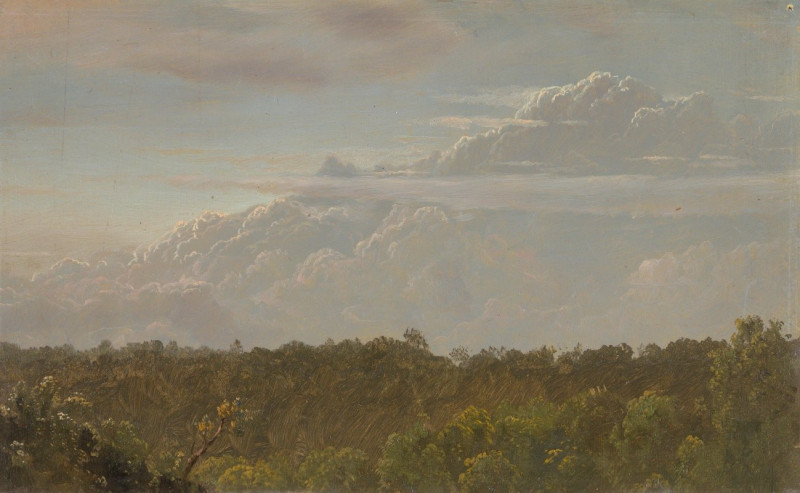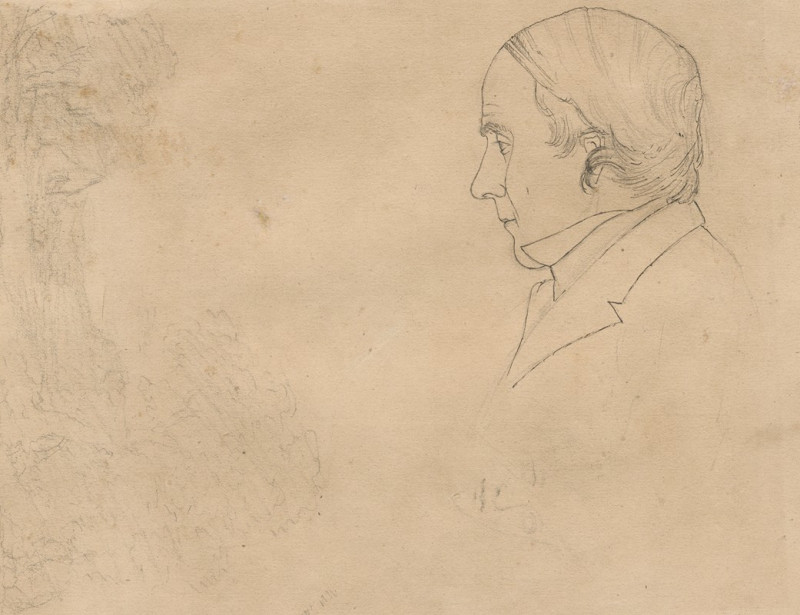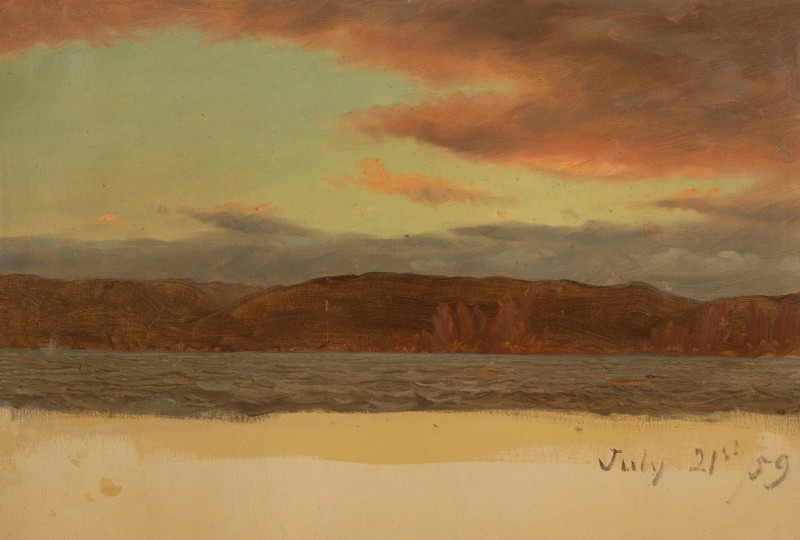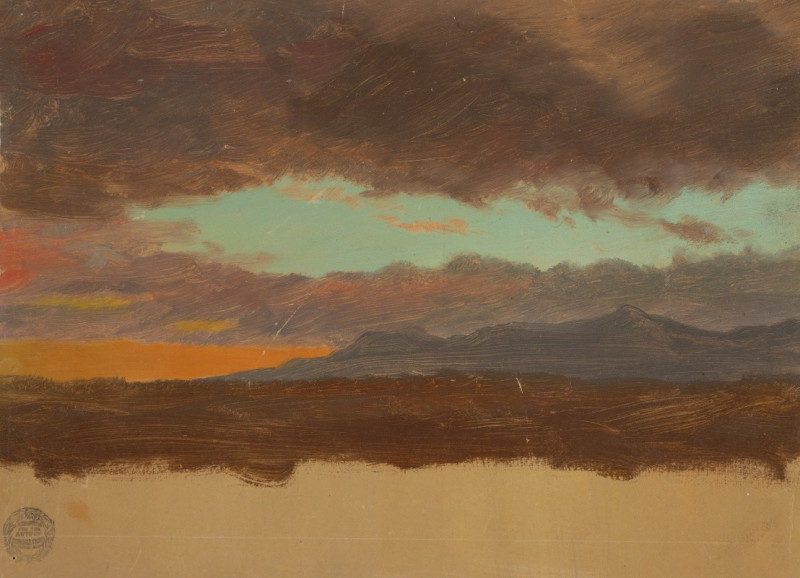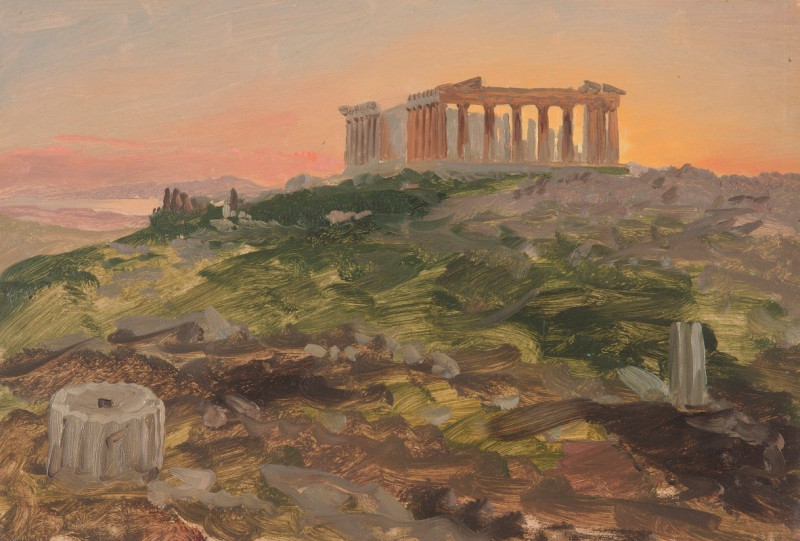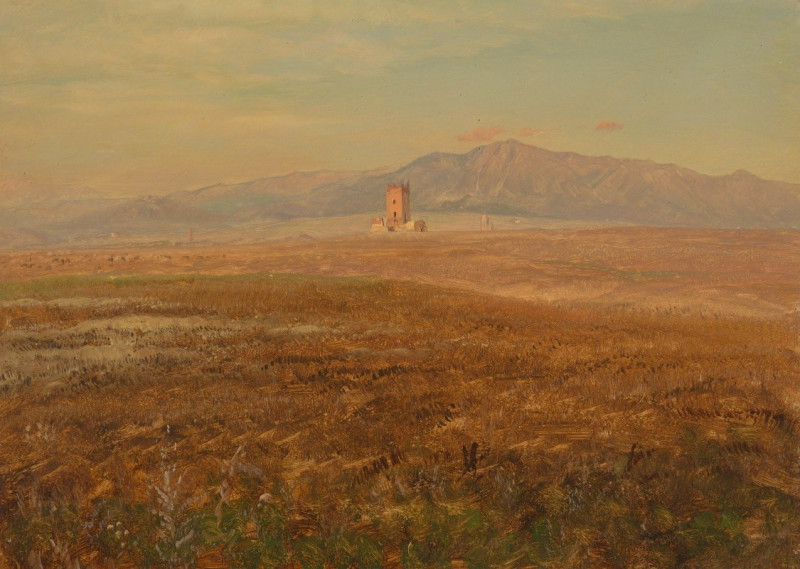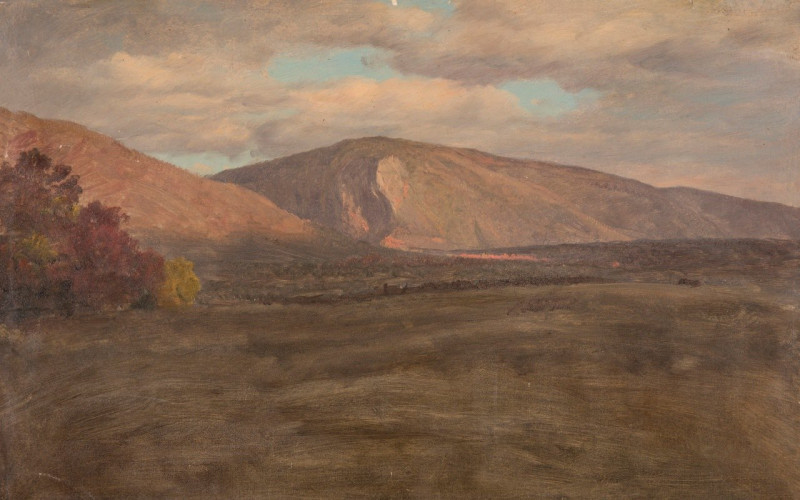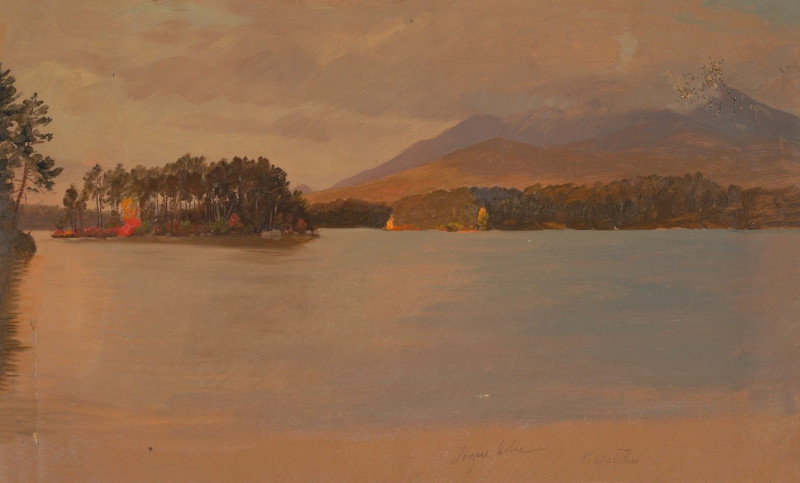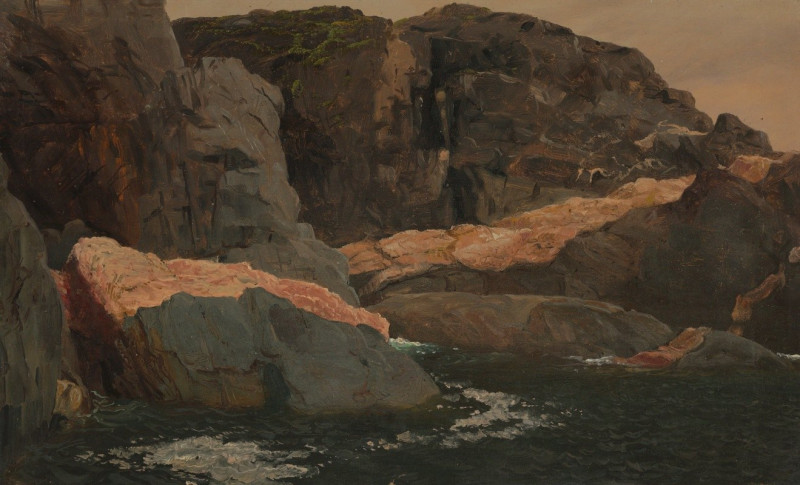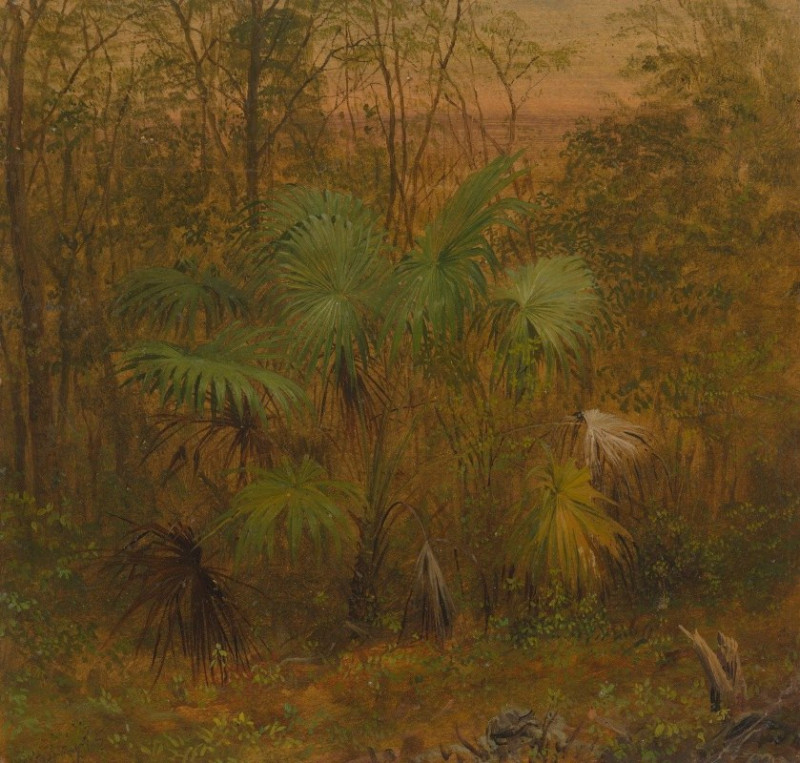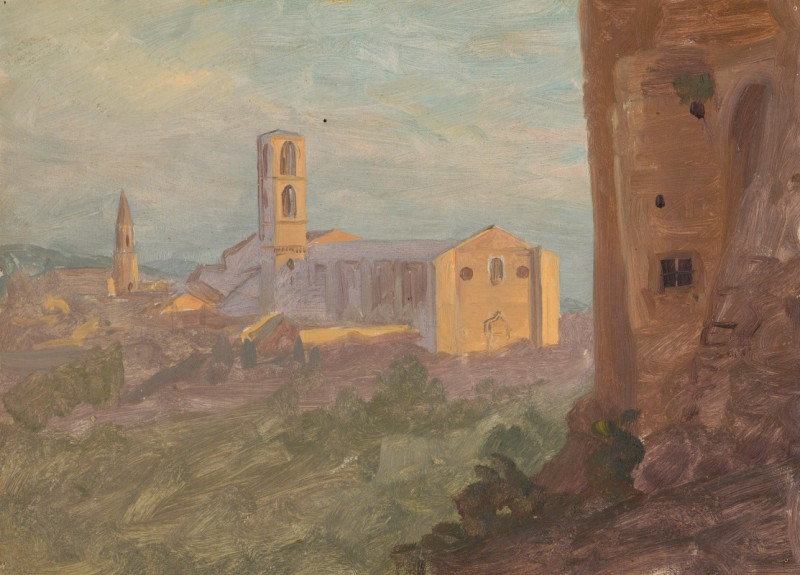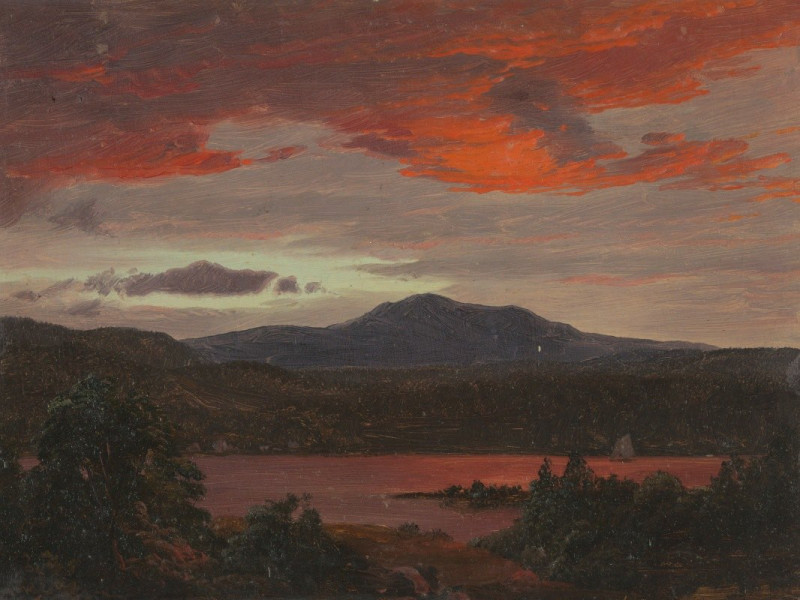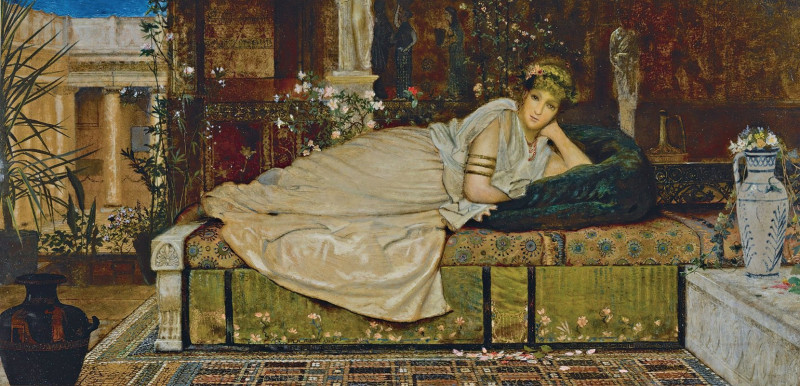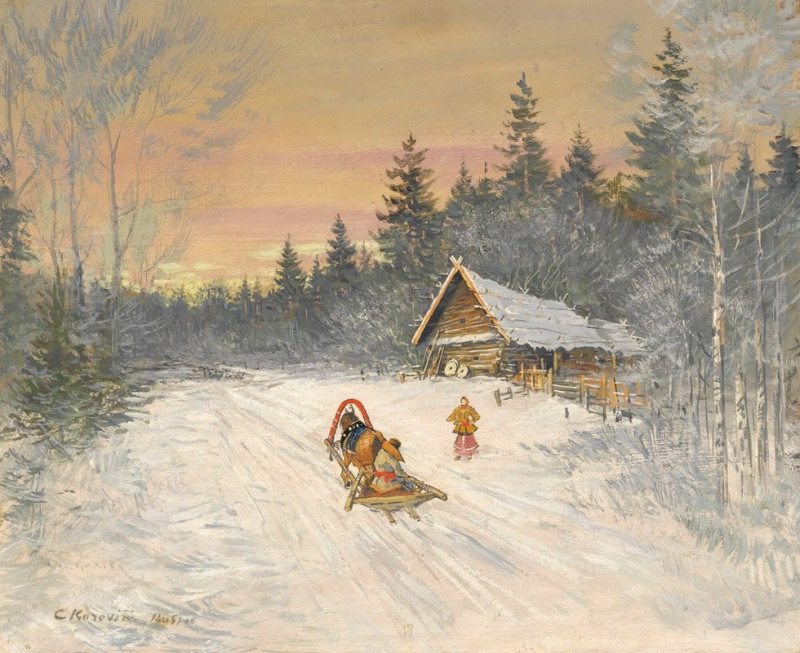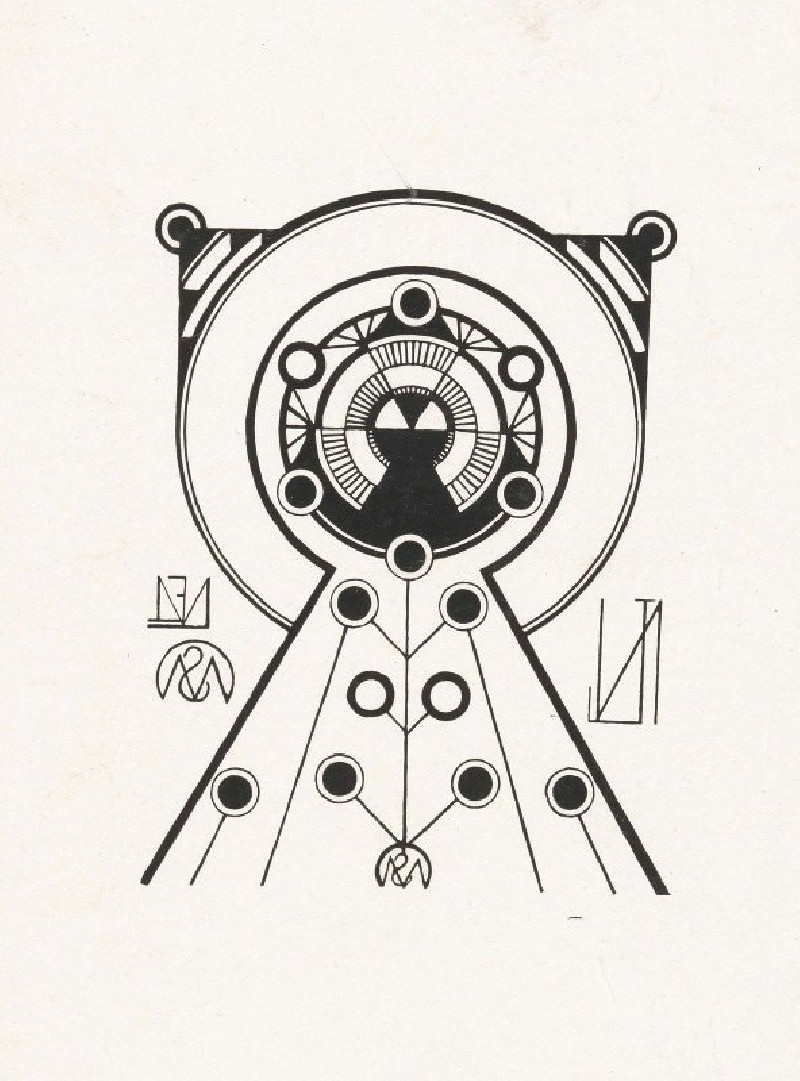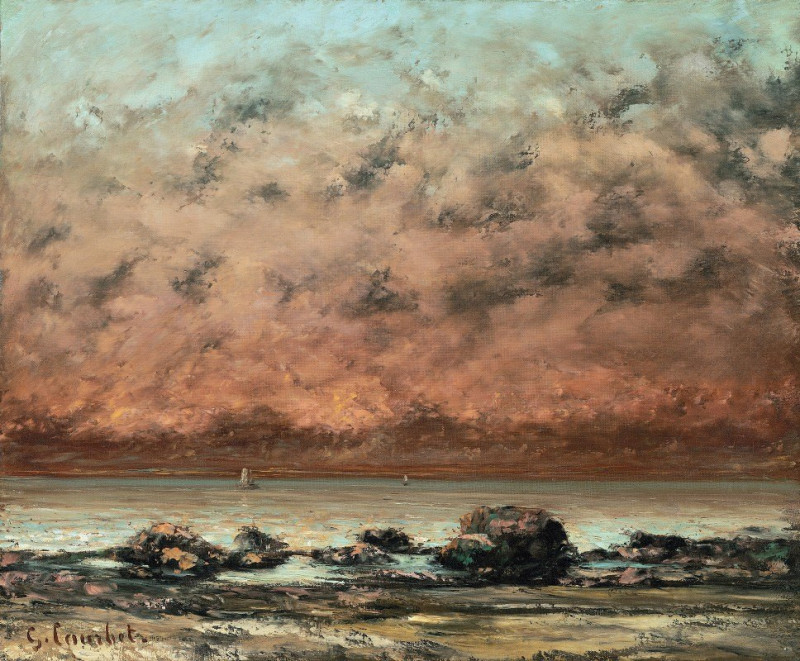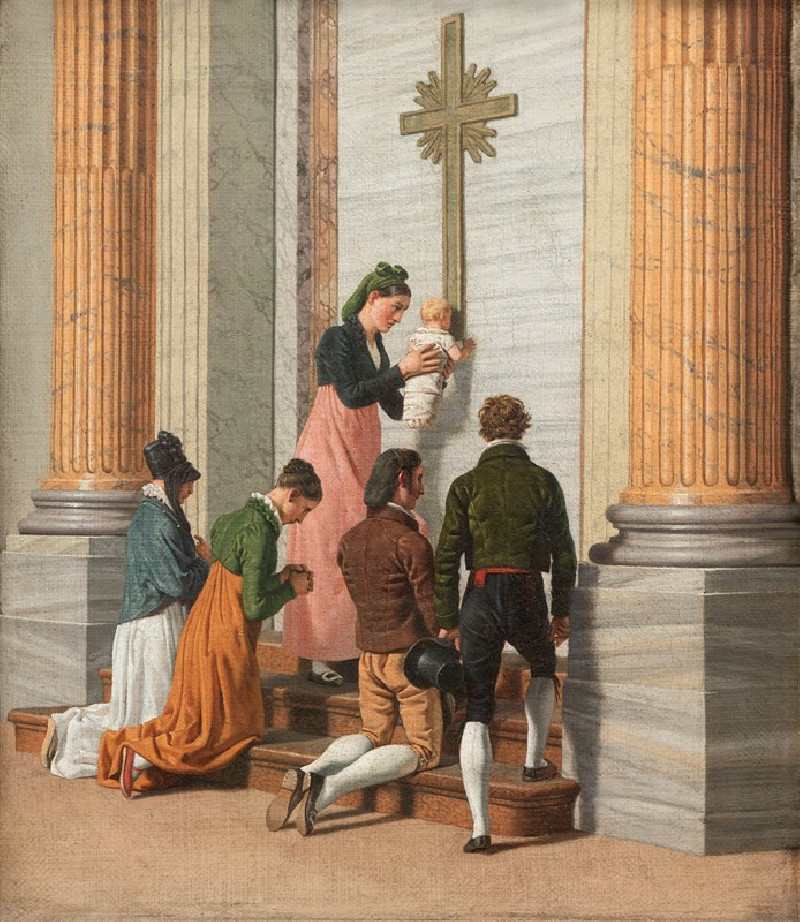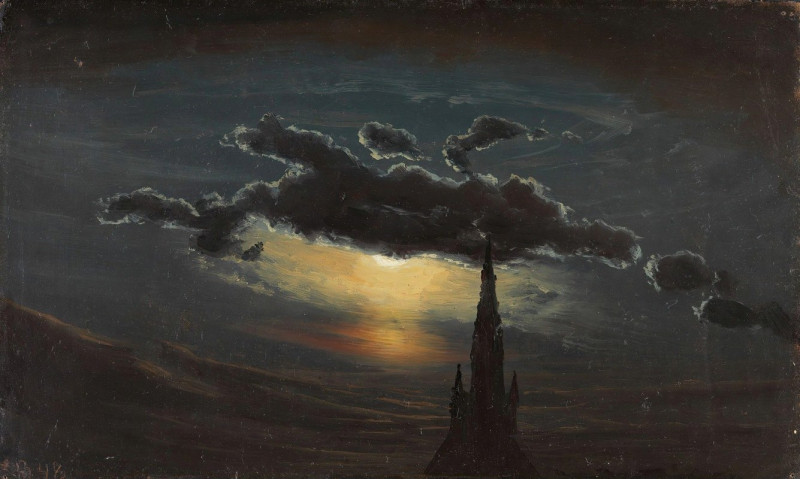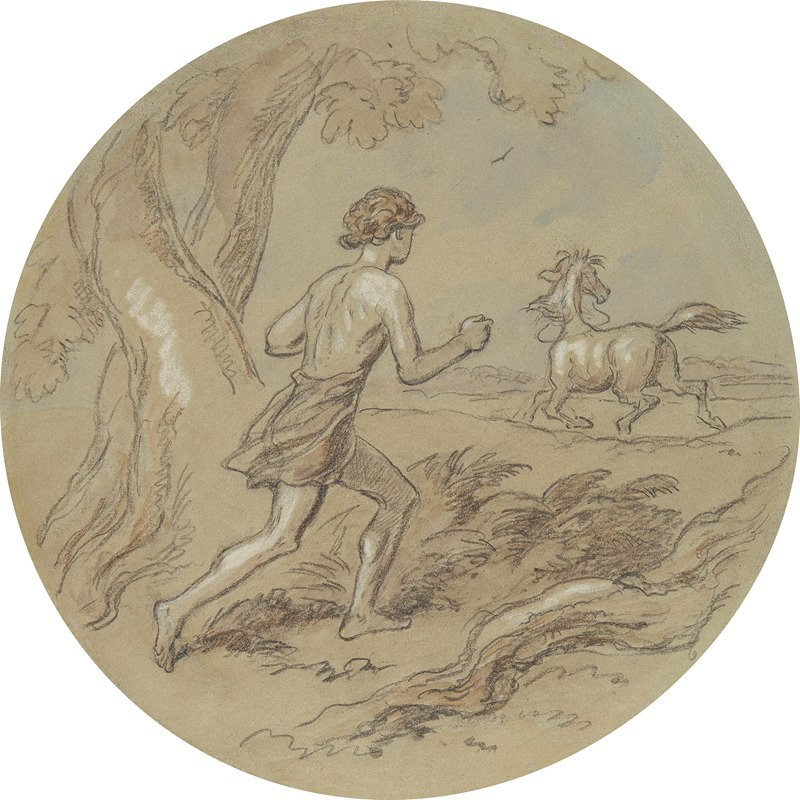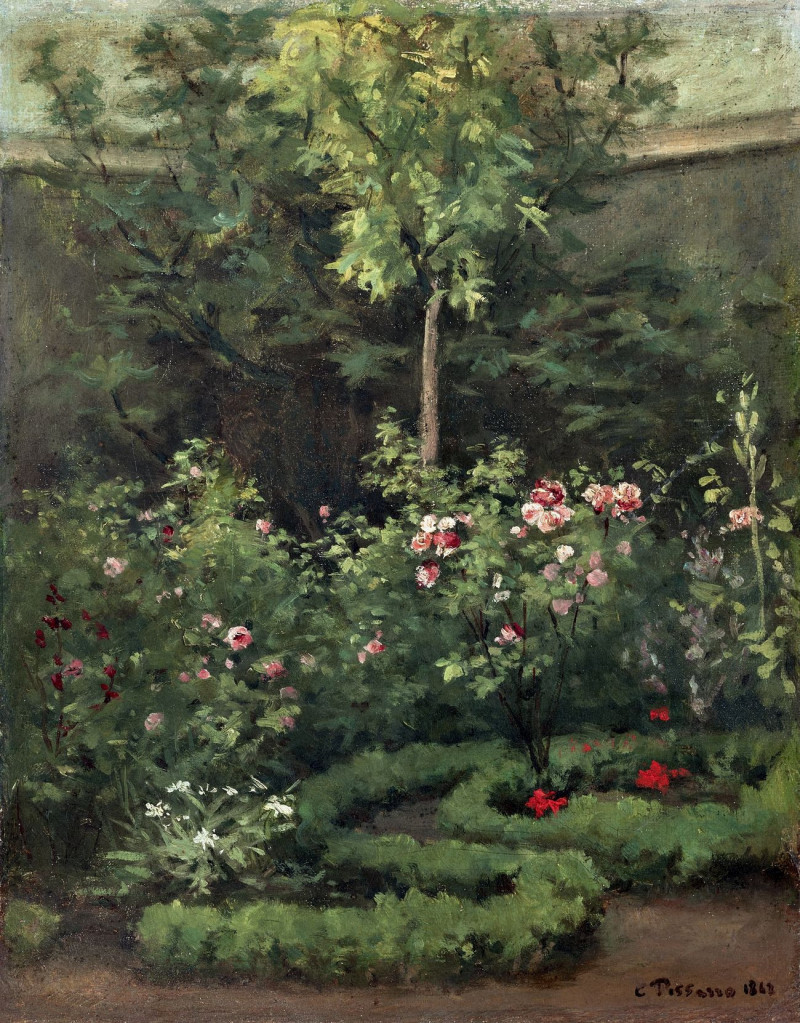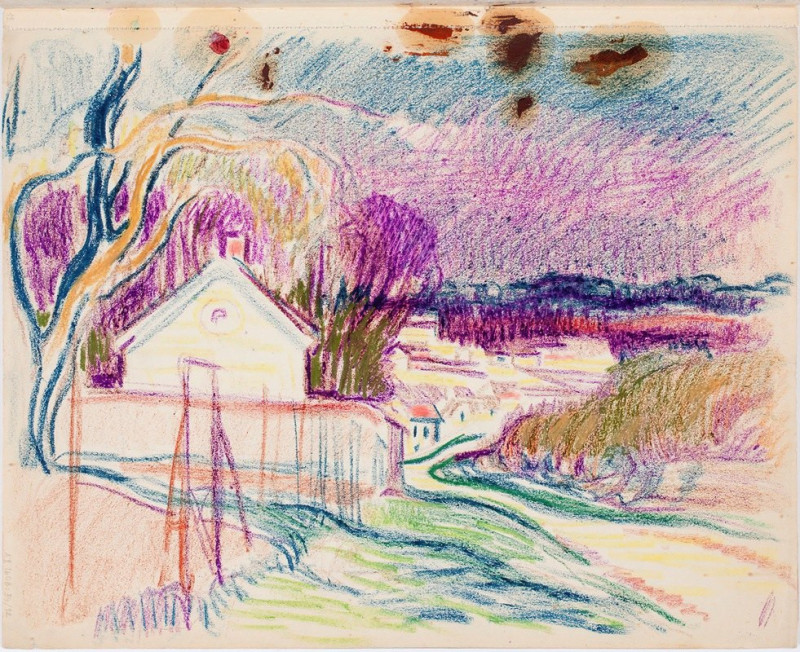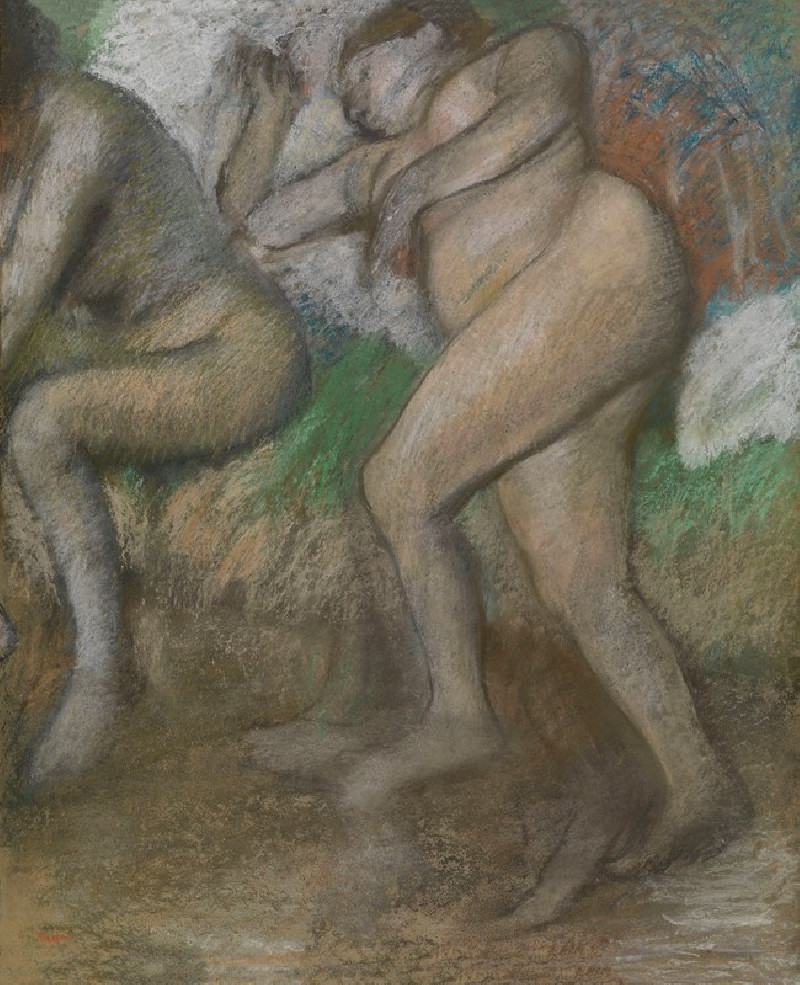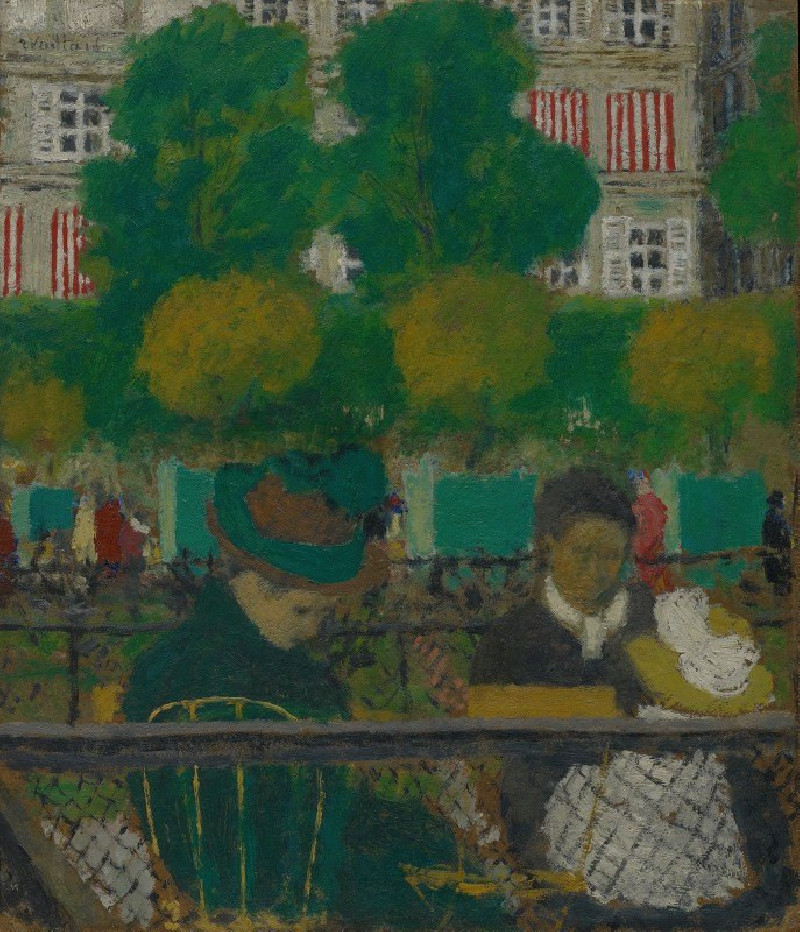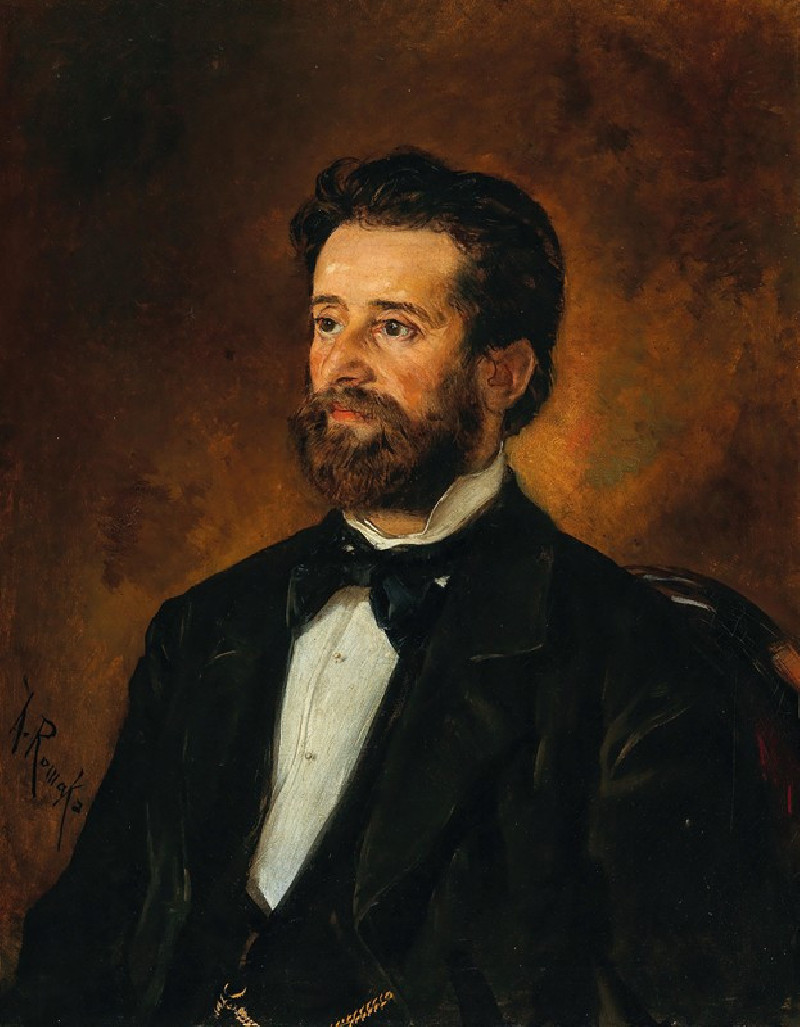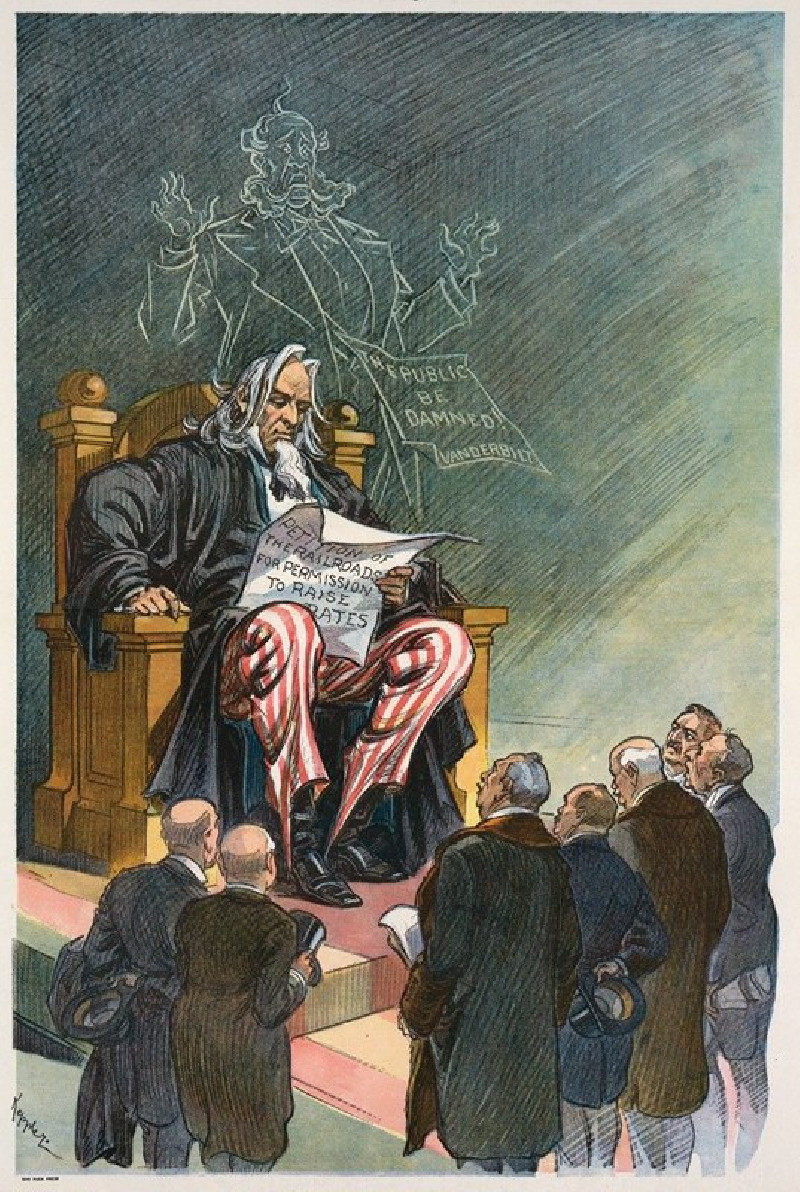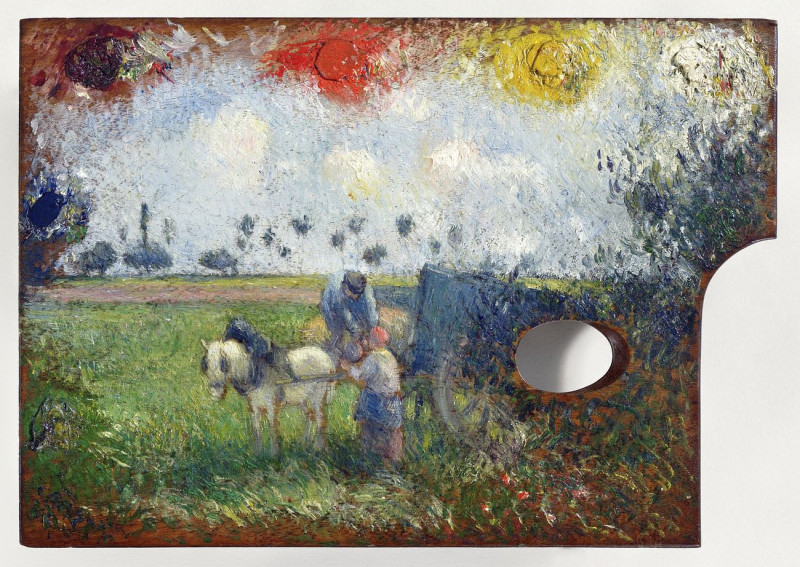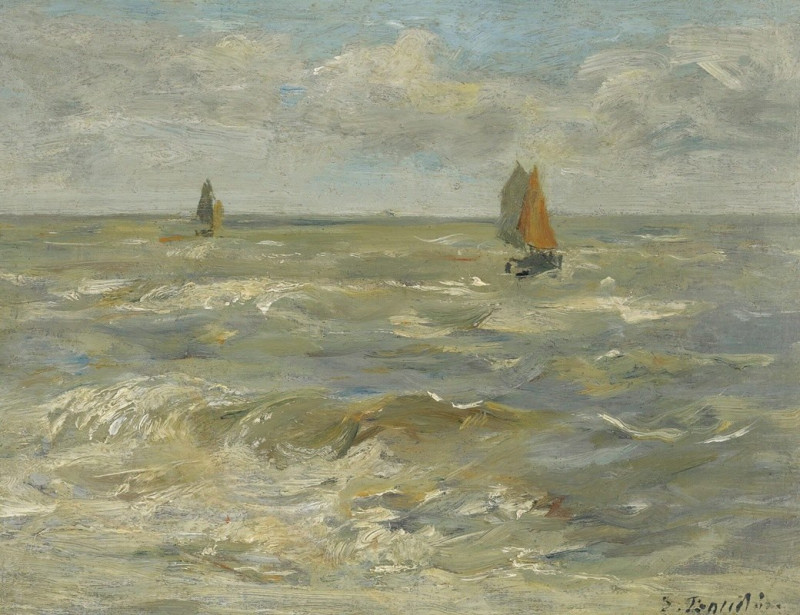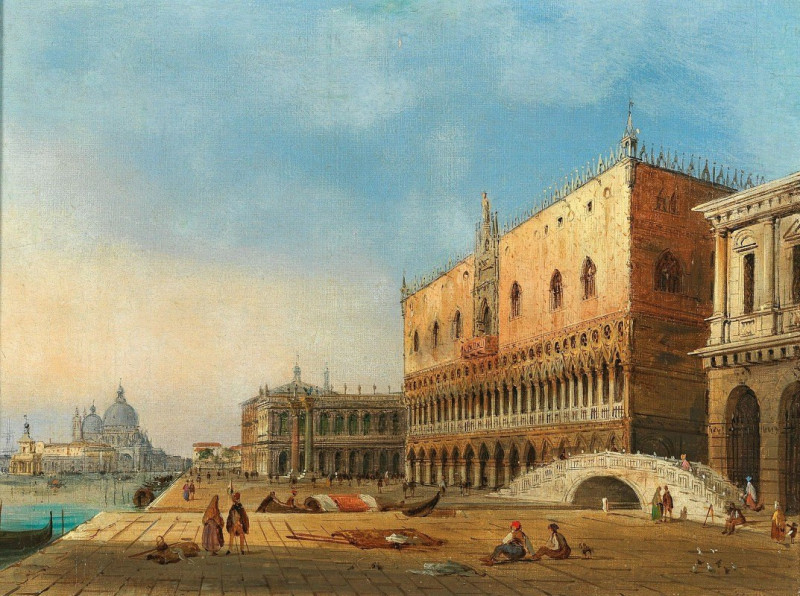Rooftops at Sunset from the Pincio, Rome (late 1868 or early 1869)
Technique: Giclée quality print
Recommended by our customers
More about this artwork
This mesmerizing artwork titled "Rooftops at Sunset from the Pincio, Rome" was masterfully painted by the eminent American landscape artist Frederic Edwin Church. Painted during the late 1868 or early 1869, the scene captures a poignant and atmospheric view of Rome as seen from the vantage point of the Pincio, a renowned hill in the northeastern quadrant of the historical city center.In Church's painting, the foreground is dominated by the dark, silhouetted forms of Roman buildings. Their rustic textures and time-worn features suggest a city rich in history and layered stories. The buildings appear quiet and almost solemn as the day draws to an end. What truly draws the viewer into the canvas, however, is the spectacular Roman sky at sunset. Church uses a vibrant palette of fiery reds, deep oranges, and mellow yellows that bleed into each other, reflecting the sky's transcendent beauty. These warm colors contrast starkly with the cool blue of the impending night sky, creating a striking visual effect.The horizon is softly blurred, where the warmth of the day meets the cool of the twilight, encapsulating a brief moment that Church has frozen in time. This juxtaposition is not just a daily natural occurrence but echoes the eternal city's flux between its ancient past and the march towards the future."Rooftops at Sunset from the Pincio, Rome" is more than just a landscape; it is a moment of reflection, a piece that tempts one to linger over the memories of the day just as one would linger over the fading light of the sunset.
Delivery
Returns
Frederic Edwin Church (May 4, 1826 – April 7, 1900) was an American landscape painter born in Hartford, Connecticut. He was a central figure in the Hudson River School of American landscape painters, best known for painting large landscapes, often depicting mountains, waterfalls, and sunsets. Church's paintings put an emphasis on realistic detail, dramatic light, and panoramic views. He debuted some of his major works in single-painting exhibitions to a paying and often enthralled audience in New York City. In his prime, he was one of the most famous painters in the United States.

